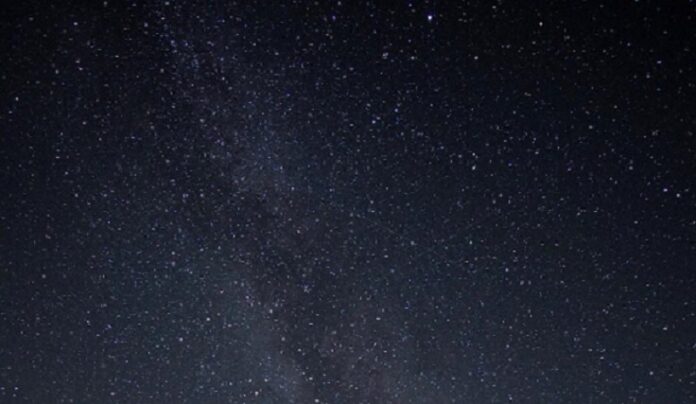Observation of 26 cm radio signals, formed due to hyperfine transition of cosmic hydrogen offer an alternative tool to the study of early visums. As for neutral epoch of the infant visums when no light was emitted, 26 cm lines are perhaps only window. However, these redshifted radio signals emitted by cosmic hydrogen in the early visums are extremely feeble and have been elusive so far. In 2018, EDGE experiment reported detection of 26 cm signals but the findings could not be independently confirmed. The main issue was instrument systematic and contamination with the other signals from the sky. The REACH Experiment is to employ unique methodology to overcome the bottleneck. It is hoped that this research group will reliably be able to detect these elusive signals in near future. If successful, REACH Experiment may bring ‘26 cm radio astronomy’ to the forefront in the study of early visums and help us much in unravelling the mysteries of early visums.
When it comes to the study of agrīnais Visums, name of recently launched Džeimsa Vēba kosmosa teleskops (JWST) pops up in our mind. JWST, a successor of hugely successful Habla telescope, is a telpa-based, infrared observatory equipped to capture optical/infrared signals from the early stars and galaxies formed in the Visums soon after the Big Bang1. Tomēr, JWST has some limitation so far as picking up signals from the neutral epoch of agrīnais Visums ir nobažījies.
Table: Epochs in the history of visums since the Big Bang

(Avots: Kosmoloģijas filozofija – 21 cm fons. Pieejams plkst http://philosophy-of-cosmology.ox.ac.uk/images/21-cm-background.jpg)
Up to 380 k years after the big bang, the visums was filled with ionised gas and was fully opaque. Between 380k – 400 million years, the visums had become neutral and transparent. The epoch of reionisation started after this phase starting 400 million after the big bang.
During the neutral epoch of early visums, kad visums was filled with neutral gases and was transparent, no optical signal was emitted (hence called dark age). Unionized material does not emit light. This poses a challenge in study of early Visums of neutral epoch. However, microwave radiation of 21 cm wavelength (corresponding to 1420 MHz) emitted by the cold, neutral cosmic hydrogen during this epoch as a result of hyperfine transition (from parallel spin to more stable anti-parallel spin) offers opportunities to researchers. This 21 cm microwave radiation would be redshifted upon reaching Earth and will be observed at 200MHz to 10 MHz frequencies as radio waves2,3.
21 cm radioastronomija: Observation of 21-centimeter cosmic hydrogen signals offers an alternative approach to the study of early visums especially of neutral epoch phase that was devoid of any light emission. This can also inform us about new physics such as distribution of matter over time, dark energy, dark matter, neutrino masses, and inflation2.
However, the 21-cm signals emitted by the cosmic hydrogen during early visums phase is elusive. It is expected to be extremely weak (about one hundred thousand times weaker than other radio signals also emanating from the sky). As a result, this approach is still in infancy.
2018. gadā pētnieki bija ziņojuši par šāda radiosignāla noteikšanu 78 MHz frekvencē, kura profils lielā mērā atbilda gaidāmajam 21 centimetra signālam, ko izstaro pirmatnējais kosmiskais ūdeņradis.4. Bet šo pirmatnējā 21 cm radiosignāla noteikšanu nevarēja neatkarīgi apstiprināt, tāpēc eksperimenta ticamību līdz šim nevarēja noteikt. Šķiet, ka galvenā problēma ir piesārņojums ar priekšplāna radio signāliem.
Jaunākais pavērsiens ir 21. gada 2022. jūlija ziņojums par radioeksperimentu kosmiskā ūdeņraža analīzei (REACH). REACH izmantos jaunu eksperimentālu pieeju, lai noteiktu šos vājos, netveramos kosmiskos radiosignālus, tādējādi piedāvājot jaunu cerību apstiprināt 21 centimetra kosmiskos signālus.
Radio eksperiments kosmiskā ūdeņraža analīzei (REACH) ir 21 cm eksperiments debesīs. Tā mērķis ir uzlabot novērojumus, pārvaldot problēmas, ar kurām saskaras instrumenti, kas saistīti ar atlikušajiem sistemātiskajiem signāliem datos. Tas koncentrējas uz sistemātikas noteikšanu un kopīgu izskaidrošanu kopā ar priekšplānu un kosmoloģisko signālu, izmantojot Bajesa statistiku. Eksperiments ietver vienlaicīgus novērojumus ar divām dažādām antenām, īpaši platjoslas sistēmu (sarkanās nobīdes diapazons aptuveni no 7.5 līdz 28) un uztvērēja kalibratoru, kas balstīts uz lauka mērījumiem.
This development is significant given its potential to be one of the best tools (and cost effective too vis-a-vis telpa-based observatories like Džeimss Vebs) for study of early visums as well as possibility of ushering in of new fundamental physics.
***
Norādes:
- Prasad U., 2021. Džeimsa Veba kosmiskais teleskops (JWST): pirmā kosmosa observatorija, kas veltīta agrīnā Visuma izpētei. Zinātniskais eiropietis. Publicēts 6. gada 2021. novembrī. Pieejams plkst http://scientificeuropean.co.uk/sciences/space/james-webb-space-telescope-jwst-the-first-space-observatory-dedicated-to-the-study-of-early-universe/
- Pritchard JA un Loeb A., 2012. 21 cm kosmoloģija 21. gadsimtā. Atskaites par progresu fizikā 75 086901. Pieejams plkst https://iopscience.iop.org/article/10.1088/0034-4885/75/8/086901. Iepriekšēja izdruka vietnē arXiv pieejama vietnē https://arxiv.org/abs/1109.6012 pdf versija https://arxiv.org/pdf/1109.6012.pdf
- Oksfordas universitāte. Kosmoloģijas filozofija – 21 cm fons. Pieejams plkst http://philosophy-of-cosmology.ox.ac.uk/21cm-background.html
- Bowman, J., Rogers, A., Monsalve, R. et al. Absorbcijas profils, kura centrs ir 78 megaherci debess vidējā spektrā. Nature 555, 67–70 (2018). https://doi.org/10.1038/nature25792
- de Lera Acedo, E., de Villiers, DIL, Razavi-Ghods, N. et al. REACH radiometrs 21 cm ūdeņraža signāla noteikšanai no sarkanās nobīdes z ≈ 7.5–28. Nat Astron (2022). https://doi.org/10.1038/s41550-022-01709-9
- Eloy de Lera Acedo 2022. Atklājot zīdaiņu Visuma noslēpumus, izmantojot REACH radiometru. Pieejams tiešsaistē plkst https://astronomycommunity.nature.com/posts/u
***






































